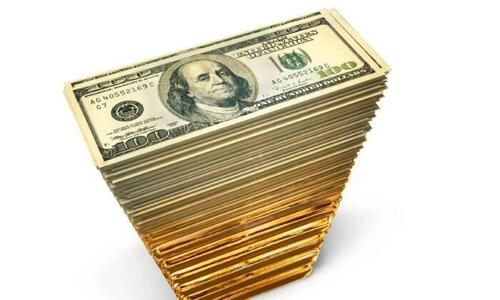Overview: The US dollar is surging today against
most of the G10 currencies, and although the intraday momentum is stretched
ahead of start of the North American session, there may be little incentive to
resist before the end of the FOMC meeting tomorrow. The Bank of Japan's rate
hike and the end of Yield Curve Control were not seen as the start of the
tightening cycle. The two-year JGB yield slipped to a two-week low and settled
below its 20-day moving average for the first time since mid-January. The Reserve
Bank of Australia delivered a dovish hold by dropping the reference the future
tightening. The yen (~-0.95%) and Australian dollar (~-0.85%) are the weakest
of the G10 currencies. Emerging market currencies are lower, led by the
Philippine peso (~-0.65%). The offshore yuan is weaker for the sixth
consecutive session.
Japanese, Australian, and New
Zealand equities bucked the regional trend to advance today. Stoxx 600 in
Europe is slightly lower, and if sustained, it would be the fourth consecutive
losing session. That would be the long losing streak since last October. US
index futures are nursing small losses. Ten-year JGB and Australian bond yield
fell almost three basis points today. European benchmark yields are mostly
slightly softer, though the periphery is lagging the core today. The US 10-year
yield is little changed near 4.32%. The high for the year is near 4.35%. The US
two-year yield did set a new high for the year yesterday near 4.75%. It is near
4.72% now. The greenback's strength is capping gold, which is trading inside
yesterday's range and straddling the $2150 area. May WTI soared to $82.50
yesterday as its recent rally was extended amid Ukrainian strikes on Russian
refiners. Diesel futures rose for the fourth consecutive session yesterday and
gasoline futures extend its rally for a sixth session. May WTI is consolidating
in a narrow range around $82.
Asia Pacific
The Japanese press reports
turned out to be fairly accurate: the Bank of Japan hiked its overnight target
rate to 0%-0.1%. It
scrapped the Yield Curve Control and confirmed it would stop buying ETFs. The
one surprise was that the central bank indicated it would continue to purchase
long-term bonds as needed. Governor Ueda, on one hand, said that the sustained
2% inflation target is not in hand, which sounded dovish. He also recognized
that if the positive trends for wages and prices lift inflation expectations,
and higher prices results, rate hikes may be necessary. The 10-year yield
softened by almost three basis points (to ~0.73%). The Nikkei rallied 1%, and
the yen was sold. The US dollar reached about JPY150.50.
As widely expected, the
Reserve Bank of Australia left its cash target rate at 4.35%, where it has been
since it was lifted by 25 bp last November. Economic activity has slowed, and price pressures are
moderating, but the RBA seems to be in no hurry to unwind the November hike.
Still, it dropped the reference to possible future hikes. The dovish hold sent
the Australian dollar to a nine-day low near $0.6510. The futures market is not
100% confident the RBA will do so before September. However, the odds of an
August cut have been marked up to around 97% from about 78% yesterday.
The dollar is rising against
the Japanese yen for the sixth consecutive session. It matches the longest advancing streak
since last August and lifted the greenback to two-week highs near JPY150.70.
The greenback approached JPY151 in mid-February through early March. The high
from 2022 and 2023 was closer to JPY152. The intraday momentum indicators are
stretched ahead of the North American open, but there may be little incentive
to resist before tomorrow's FOMC meeting. What is being seen as a dovish
hold by the RBA has sent the Australian dollar to nearly $0.6500. The
trendline off the mid-February and early March lows comes in today a little
below there. The low earlier this month was set slightly below $0.6480. The
intraday momentum indicators are stretched. Initial resistance now is seen int
he $0.6520-25 area. The greenback's gains, especially against the yen, have
weighed on the Chinese yuan. The dollar is challenged the CNY7.20 cap that
has not been violated this year. The PBOC set the dollar's reference rate at
CNY7.0985 (CNY7.0943 yesterday). The Bloomberg average was CNY7.2020 (CNY7.1993
yesterday). The dollar is rising against the offshore yuan for the sixth
consecutive session. It has reached CNH7.2130, its highest level in two weeks. The
high for the year was set on February 14 near CNH7.2335.
Europe
The focus will not shift to
Europe until Thursday. Three
central banks meet then, Norway's Norges Bank, the Swiss National Bank, and the
Bank of England. It is true the UK sees February CPI tomorrow. The
year-over-year rate is expected to fall toward 3.5% from 4.0% and the core rate
is seen falling to 4.6% from 5.1%. The UK's three-month annualized rate may
near 2% and the six-month annualized increase maybe around 1.6%. Still, the
market does not expect the BOE or the other west European central banks to
change policy. Still, we suspect the risk is for a SNB move to get ahead of the
ECB. The macro backdrop is conducive for a move with softer growth and low
inflation.
The March ZEW survey in
Germany showed a little improvement. The
assessment of the current situation remains poor. It edged up to -80.5 from -81.7. At its worst, during the pandemic, it fell to
-93.5 in May 2020. It had recovered and peaked at 21.6 in October 2021, and had
already begun weakening again before Russia's invasion of Ukraine. It was at
-10.2 in January 2022. The expectations component is a different story. It rose for the eighth consecutive month to 31.7, which is the highest reading since February 2022. The high last year was set in February at 28.1.
The euro met sellers in the
US morning yesterday as it pushed above $1.09. The selling knocked it down to new
session lows near $1.0865 It has been sold to $1.0835 today, around where the
(50%) retracement of the rally from the February 14 lows and the 200-day moving
average are found. A break of this area targets $1.08. Note that in the futures
market, the non-commercial (speculative) net long euro position has risen by
50% since the mid-February low through March 12 that is covered by the most
recent CFTC report. Meanwhile, the non-commercial net long sterling position
has risen every week this year but one, and at nearly 70.5k contracts (GBP62.5k
per contract or almost $5.6 bln position), it is the largest net long position
since 2007. Sterling extended its losses yesterday to nearly $1.2715, and has been sold to almost $1.2665 today, the lowest level since March 4. The
$1.2670 area corresponds to the (61.8%) retracement of the recovery off the
year's low set on February 14 near $1.2535. The intraday momentum indicators
are stretched, but there is little chart support ahead of $1.2600.
America
The focus, of course, is on
tomorrow's Fed meeting. No
one expects the Fed to do anything. It is more about what the Fed says, and
here, the dot plot is important. Keen interest is in the number of rates cuts
the median dot signals. Three cuts were signaled in December. While CPI and PPI
were slightly above market expectations, we do not think that they deviated
much from what the Fed anticipated. To us, a key consideration is Fed Chair
Powell's acknowledgement that officials did not need to see better data to
boost their confidence that inflation was headed back to target. It just needed
to see good data. Other macro forecasts may be tweaked. The 4.1% unemployment
rate anticipated for this year looks low. It was at 3.9% in February. The
median dot was for the headline and core PCE deflator to be at 2.4% at the end
of the year. They stood at 2.4% and 2.8%, respectively in January and are
expected to be unchanged when the February series is reported next week. The
median dot in December was for the economy to grow 1.4% this year. The median
forecast in Bloomberg's monthly survey was for 2.1% growth, which is the same
as the IMF's projection. On tap today, February housing starts and permits,
which are expected to tick up after weather-related weakness in January.
Canada reports February CPI
today. Given the base
effect, the 0.6% median forecast in Bloomberg's survey translates into a 3.1%
year-over-year rate. It was at 2.9% in January. The low print in 2023 was in
June at 2.8%. The underlying core measures are expected to be flat. The swaps
market has about a 50% chance of a cut in June. It nearly fully discounted on
March 5, the day before the Bank of Canada met. The summary of its
deliberations will be published tomorrow. The market has about 60 bp of cuts
discounted for this year, which is two quarter-point moves and around a 40%
chance of a third. A 100 bp of cuts was fully discounted as recently as
February 20.
The US dollar hovered around
little changed levels against the Canadian dollar yesterday. Neither rising US equities (risk-on) nor
an extension of oil's rally did much for the Canadian dollar. Resistance near
CAD1.3550 has been overcome today and it the greenback looks poised to re-test
the CAD1.36 area that capped the greenback in late February and earlier this
month. A band of resistance extends toward CAD1.3620-25. Yesterday,
the US dollar rose for the third consecutive session against the Mexican
peso, which matches the longest advance in six months. The nearly 0.9%
rally was the most since mid-January. Mexico was on holiday yesterday and the
thin markets may have exacerbated the move. The US dollar rose to a six-day
high of almost MXN16.87. This effectively recouped nearly half of the
greenback's losses this month. Today, the dollar is approaching the next
retracement (61.8%) and the 20-day moving average are near MXN16.93. Brazil was
not closed and fell for the third consecutive session. In fact, the dollar
poked above BRL5.03, its highest level since last November 1. Nearly all
emerging market currencies fell yesterday. The South African rand (~-0.95%) was
the weakest followed by the Mexican peso (~0.75%). Emerging market currencies
are no match for the dollar's surge today. The MSCI Emerging Market Currency
Index is off for the fifth consecutive session.
Disclaimer
unemployment
pandemic
bonds
yield curve
equities
fomc
fed
currencies
us dollar
canadian dollar
euro
yuan
governor
recovery
gold
oil
brazil
mexico
japan
canada
european
europe
uk
germany
russia
ukraine
Read More









































